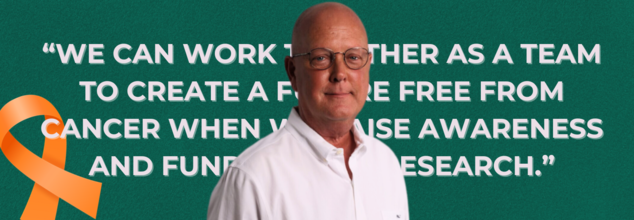- Health Conditions A-Z
- Health & Wellness
- Nutrition
- Fitness
- Health News
- Ayurveda
- Videos
- Medicine A-Z
- Parenting
- Web Stories
Strokes And Heart Attack More Common In People With THESE 6 Condition

(Credit-Canva)
High blood pressure is a very common condition that millions of people around the globe experience. The World Health Organization states the 1.28 billion adults aged 30-79 years have high blood pressure, or hypertension. Another interesting fact is that 46% of them are unaware they have high blood pressure.
Hypertension not only causes strain on your heart, but it is also the reason why you may experience strokes or heart attacks. Arteries are vital blood vessels that transport blood from your heart throughout your body. While a certain level of pressure is essential for blood circulation, excessive pressure can be detrimental over time. The NHS typically diagnoses hypertension when blood pressure readings consistently exceed 140/90 mmHg.
However, who is more at risk for developing high blood pressure?
Who Is at Higher Risk of High Blood Pressure?
Several factors can increase your susceptibility to developing high blood pressure. These can be broadly categorized into underlying medical conditions and lifestyle factors.
- Kidney disease
- Diabetes
- Hormonal conditions like Cushing’s syndrome (where the body produces too many steroid hormones)
- Obstructive sleep apnea
- Are taking certain herbal remedies
- Are taking some medications, such as oral contraceptives?
If you're concerned your medication is affecting your blood pressure, it's advisable to speak with a healthcare professional.
Lifestyle and Other Factors
Your daily choices and personal characteristics also play a big role. Eating a lot of fatty or salty foods, not getting enough exercise, and being overweight all increase risk. Smoking, drinking too much alcohol, and high stress levels are also significant contributors. As you get older, your risk naturally increases, and having a family history of high blood pressure or being of Afro-Caribbean or South Asian origin also raises your chances.
What Are the Symptoms of High Blood Pressure?
It's crucial to understand that high blood pressure is often called "the silent killer" because it usually has no noticeable symptoms. This means you can have it for years without knowing, leading to serious health problems. However, in rare situations, some subtle signs might appear. These can include unexplained headaches, changes in vision like blurriness or double vision, frequent nosebleeds, or feeling short of breath.
What Happens if High Blood Pressure Is Left Untreated?
Ignoring high blood pressure can lead to very serious health issues. Beyond the well-known risks of strokes and heart attacks, untreated hypertension can damage your body in other ways. It can cause conditions like arterial thrombosis, which are dangerous blood clots in your arteries, or an abdominal aortic aneurysm (AAA), a bulging in your main artery. It can also lead to kidney disease and even vascular dementia, affecting your brain function.
Taking steps to manage and prevent high blood pressure is essential for your long-term health. The good news is that many lifestyle changes can make a big difference. Regular exercise is key, along with cutting down on alcohol and switching to a healthy, low-fat diet. It’s also important to reduce your salt intake and lose weight if you're overweight. Cutting back on caffeine and trying relaxation therapies like yoga can also help. And of course, never use recreational drugs.
Dormant For 50 Years, Woman Dies From Extremely Rare Brain Disease Decades After Childhood Hormone Shot

Credits: Canva
An extraordinary case reveals the shocking latency of prion disorders and poses international public health issues decades since infected hormone treatment ceased. A 58-year-old U.S. woman has succumbed to iatrogenic Creutzfeldt-Jakob disease (iCJD)—a lethal neurodegenerative and incurable brain disorder—almost 50 years after she was treated with cadaver-derived human growth hormone (chGH) during childhood. Her case, reported in Emerging Infectious Diseases by researchers at the University of Colorado, contributes to the increasing but uncommon cluster of iCJD cases associated with hormone treatments received years ago.
The woman was only seven years old in 1971 when she first received growth hormone therapy under the National Hormone and Pituitary Program (NHPP), which supplied cadaver-based hormones to address childhood growth failure. Her exposure lasted for more than nine years—a duration that would later be pivotal to understanding the long latency of the disease that would kill her.
The patient first came to attention with a two-week course of tremor and imbalance. Although her initial clinical workups revealed nothing calamitous—an unremarkable MRI scan and lackluster lab results—her case was taken downhill. In a matter of one month, she had progressively worsening tremor, urinary incontinence, dysarthria, and ataxia. Shortly thereafter, she became hyperekplexic, rigid, and comatose. A positive prion protein test sealed the diagnosis.
Her case is the 36th documented case of iCJD in U.S. recipients of chGH distributed by NHPP and the 254th overall. This case is unusual in that it has an exceptionally long latency period—some 48.3 years since first exposure.
What's Prion Disease?
Prion diseases, including CJD, are the result of abnormally folded proteins that initiate a cascade of misfolding in normal brain proteins. The chain reaction causes rapid neurodegeneration. Prion diseases are always fatal, and there is currently no cure. Prions are extremely resistant to standard methods of sterilization, making them especially treacherous in a healthcare environment.
What distinguishes iCJD from other types—sporadic or genetic—is where it came from: direct transmission through medical procedures. Here, transmission was through cadaver-derived hormone therapy, which is now outdated, but was commonplace during the middle part of the 20th century prior to the advent of recombinant biosynthetic hormones in 1985.
Latency that Defies Medical Precedent
One of the most chilling features of this case is the lengthy latency of the disease. The latency period, according to scientists, can vary anywhere from several years to over five decades. Determining factors for the duration include dose, route of administration, and recipient genetics—most notably a particular polymorphism of the PRNP gene (codon 129), which this patient had. This genetic mutation is linked with prolonged incubation of disease in acquired prion disease.
Four latency estimations were used in this case, but the most accurate—measuring from the midpoint of pre-1978 hormone treatment to symptom onset—yielded a 48.3-year latency. This lengthy dormancy makes iCJD uniquely difficult to track and almost impossible to prevent in retrospect.
As the U.S. NHPP was closed down shortly after confirmation of the iCJD association in the mid-1980s, this example highlights the long-term public health consequences of historical medical practices. Based on the study, about 7,700 children received chGH in the U.S., and over 250 have developed iCJD worldwide.
The investigators note that U.S. lots of chGH probably contained less prion contamination than foreign versions. Furthermore, purification procedures added in 1977 may have mitigated the risk but not removed it.
Curiously, experimental research with nonhuman primates identified that contamination of NHPP chGH lots was both infrequent and randomly distributed. Yet even these minimal amounts were sufficient to cause deadly infections decades later.
Diagnosing the Undiagnosable Disease
Diagnosis of prion diseases continues to be elusive and is usually only possible after death. In this instance, high-tech diagnostics—such as real-time quaking-induced conversion assay and cerebrospinal fluid tests—played a vital role in detecting the presence of prions. Increased levels of tau and 14-3-3 protein in cerebrospinal fluid also helped make the diagnosis. Autopsy diagnosis was made by Western blot and immunohistochemistry.
However, the window for treatment is practically nonexistent. Symptoms of prion diseases develop and advance rapidly, with the majority of patients dying in a matter of months from diagnosis.
With long latency periods and the extensive previous use of chGH, experts caution that there are still likely to be more cases of iCJD to come. This potential necessitates ongoing surveillance and retrospective patient follow-up.
This case is a stark reminder of the ability of medicine to heal and to harm. Although present-day biosynthetic hormone therapy is safe, the remnants of past methods still linger in modern healthcare. While science may continue to push forward, this tale emphasizes the need for careful monitoring, ethical treatment procedures, and extended patient follow-up—decades after the initial dose is administered.
Key Points About Prion Disease
- Prion conditions such as iCJD are very rare but always deadly.
- Diagnosis is difficult and confirmed only post-mortem in many cases.
- Latency can range from decades, making it difficult for public health intervention.
- There is no treatment, and healthcare is palliative at best.
In the meantime, the best protection is still awareness and prevention.
What Is ‘Ozempic Teeth’? Why ‘Ozempic Face’ Isn’t the Only Worry About the Weight-Loss Drug

Credits: Canva (representational only)
As headlines continue to spotlight the dramatic transformations sparked by weight-loss drugs like Ozempic, a new concern is quietly gaining traction—one that's not so much on the scale but in your smile. Whereas "Ozempic face" has become a viral trope for the sunken-cheeked appearance that goes hand-in-hand with sudden weight loss, dentists and patients are now sounding alarms over another disconcerting side effect- "Ozempic teeth."
When GLP-1 weight-loss drugs such as Ozempic hit the market, they guaranteed dramatic drops on the scale. But along with news of trimmer figures and "Ozempic face"—the thin, hollowed appearance some users say they get—a less-publicized dental pandemic has been brewing: "Ozempic teeth." The term now refers to a range of oral issues, from receding gum and eroded enamel to chronic dry mouth and tooth rot. As more patients and clinicians sound the alarm, it's time to investigate why these ground-breaking treatments are gnawing away at our smiles.
From aching gum trouble to unexplained tooth rot and persistent dry mouth, this lesser-studied complication is raising flags among professionals but what's actually happening—and why are so many users experiencing inexplicable oral ailments?
Ozempic and its chemical relatives act by imitating the hormone GLP-1, retarding stomach emptying and appetite. Reduced eating, however, results in reduced mechanical stimulation of salivary glands. Saliva plays a pivotal role in tooth defense—it removes food particles, neutralizes destructive acids, and supplies minerals such as calcium and phosphate to strengthen enamel. When patients taking Ozempic consume reduced amounts of food or no snacks at all, salivary flow can plummet drastically, providing a dry-mouth environment that is medically referred to as xerostomia. Without such natural cleaning effect, tooth decay occurs more rapidly and gum tissues are susceptible to infection.
Acid Reflux
Numerous consumers on GLP-1 medications experience slowed digestion and reflux. New York City-based obesity medicine doctor Dr. Daniel Rosen explains that when food remains in the stomach, the danger of acid reflux into the esophagus—and up into the mouth—grows. "Stomach acid can weaken and dissolve the enamel," he explained to the Daily Mail, "making teeth more likely to decay." Gradually, enamel loss due to chronic acid exposure reveals dentin to sensitization, discoloration, and structural compromise that patients and dentists are calling "Ozempic teeth."
Vomiting, Dehydration and the Vicious Cycle
Nausea and occasional vomiting are well-documented side effects of delayed gastric emptying. Cosmetic dermatologist Dr. Michele Green writes that repetitive vomiting exacerbates enamel wear and deposits stomach acid directly in the oral cavity. At the same time, systemic dehydration—another potential side effect of GLP-1 treatments—further reduces saliva flow. Patients trapped in this loop tend to have bad breath, receding gums, and increased cavity risk.
How Celebrities Are Fuel Public Awareness?
Celebrities like Amy Schumer, Chelsea Handler, and Sharon Osbourne have openly discussed nausea and dehydration problems on Ozempic, incidentally bringing to light related dental vulnerabilities. Though most stars are able to conceal wear with veneers—in turn making "Ozempic teeth" more difficult to detect—their stories have generated wider alarm among casual users and health practitioners alike.
What are the Health Stakes of Oral Complications?
Tooth decay isn't just about looks. If left untreated, cavities and gum disease can contribute to systemic inflammation, nutritional issues, and expensive restoration procedures. For already overweight or diabetic patients—two of the most frequent indications for GLP-1 medications—piling dental disease on top can compromise overall quality of life and drive up healthcare costs.
Prevention and Early Intervention
Though there are no official dental warnings on the label of Ozempic, the experts concur that preventive measures can reduce risk. The most important methods are:
Hydration and Nutrition: Drink water during the day, chew sugar-free gum or suck xylitol mints to trigger saliva, and eat nutrient-dense, non-acid foods conducive to enamel health.
Oral Hygiene Stringency: Brush with fluoride toothpaste twice a day at a minimum, floss daily, and use a neutral-pH mouthwash to neutralize acidity.
Regular Dental Check-Ups: Report use of GLP-1 to your dentist so they can keep track of enamel health and gum status, using topical fluorides or sealants as preventive.
Acid Reflux Management: Collaborate with your doctor on control of reflux—food changes, meal timing, or adjunct medication can lower acid exposure to your teeth.
While GLP-1 agonist approvals and user bases grow, pharmaceutical companies and dental researchers are competing to establish formal guidance on and quantify "Ozempic teeth" incidence. Current clinical trials can and likely will provide clearer answers regarding the association between dosage, treatment duration, and the degree of dental risk. In the meantime, patients and providers have to weigh the certain benefits of these anti-obesity medications against new oral health risks.
Ozempic and similar GLP-1 medications have revolutionized the treatment of obesity, providing sustained weight reduction as well as enhanced metabolic parameters. However, "Ozempic teeth" serve as a reminder that no treatment is without compromise.
'I Attacked Cancer Like A Coach'- Basketball Trainer's Battle With Leukemia Was Like Teaching Cancer A Lesson

(Credit-American Cancer Society)
In 1997, at 28, Kevin Kelly was an involved basketball coach in Philadelphia. He wasn’t a coach who ‘played around’ he was known for his win-at-all-costs mentality, he explained that he treated every game as a ‘life or death’ matter.
Being able to handle high stress situations like this, feeling sick once or twice didn’t change much for him. However, after several days of feeling sick and finally experiencing severe flu-like illness at a basketball game led to the emergency room. The tests revealed an unusually high white blood cell count, eventually leading to a diagnosis of chronic myelogenous leukemia (CML).
What is Chronic Myelogenous Leukemia?
Leukemia is a cancer originating in the bone marrow's blood-forming cells. In CML, these abnormal cells don't mature correctly and fail to perform their functions, such as fighting infection. They also have a longer lifespan, accumulating and crowding out healthy cells in the bone marrow. As a chronic leukemia, CML progresses slower than acute forms, often presenting no symptoms for months or even years before diagnosis, as was the case for Kevin.
Treatment and Its Obstacles
At the time of the diagnosis, doctors had considered a bone marrow or stem cell transplant as the most effective treatment for CML.
Fortunately, Kevin's brother was a match, and the transplant proceeded. However, his recovery was far from smooth. What was expected to be a 30-day in-hospital recovery stretched to 54 days due to complications, many of which were spent in isolation. This challenging period consumed the first year of their marriage. "That was the scariest part for me," Kevin recalled, "That it wasn’t just me this was affecting, now it was my wife, too."
Kevin channelled his coaching mindset into his battle with cancer. He took up the challenge and decided he would teach cancer a lesson. With his analytical skills, working closely with his cancer care team to understand lab results, participate in treatment decisions, and strategize his recovery. "I attacked cancer like a coach," he explained. "Whatever they throw at me, I’m going to figure out how to beat it, how to dodge it, and I’m going to work hard."
Advocating and Inspiring Others
Having faced over two decades of cancer treatments and setbacks, Kevin understands the overwhelming nature of a cancer diagnosis. He remains meticulous about his care, stating, "I’m very strict. I make sure I don’t miss appointments or doses. I’m working the playbook." He strongly advises others facing cancer to actively learn and understand their condition to make informed decisions about their treatment.
Kevin and his family are committed to giving back. For years, he has been an active supporter of the American Cancer Society’s Coaches vs. Cancer program, organizing fundraising events and hosting toy drives for children battling cancer. "It’s important for me to give back, and I want to do that by educating my students about cancer and the importance of research," he stated. "We can work together as a team to create a future free from cancer when we raise awareness and fund cancer research."
© 2024 Bennett, Coleman & Company Limited

